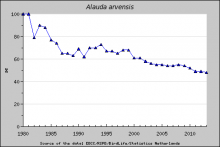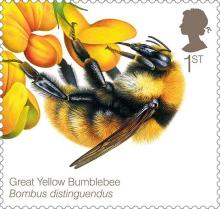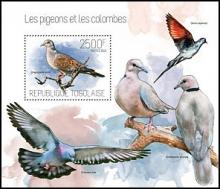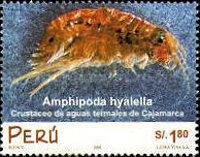English
English
State of Australia’s Birds report finds common birds as well as lesser-known species have suffered surprising drops in numbers
Some of Australia’s best-known birds, including the magpie, the kookaburra and the willie wagtail, are in decline in parts of the country, a major government-funded survey has found. The State of Australia’s Birds report found common birds, as well as lesser-known species, have suffered surprising drops in their numbers, in what has been described as a “wake-up call” for bird conservation. The data, gathered from sightings by birdwatchers, show that the magpie, a familiar sight to many Australians – and occasional dive bomber of human craniums – has been in a consistent decline on the east coast since 1999. The laughing kookaburra (Dacelo novaeguineae) is in decline in south-eastern Australia, as is the willie wagtail (Rhipidura leucophrys). Meanwhile, birds of prey in Australia’s arid outback – including falcons, owls and eagles – are in “significant decline”, the report finds, while 22 of the 39 species found in the Mallee woodland region, which covers much of southern Australia, are also losing numbers. The rainbow bee-eater (Merops ornatus), an agile insect-devouring bird, is on a downward trajectory on the east coast, while hollow-nesting parrots such as lorikeets are disappearing from areas around Melbourne, Adelaide and Canberra. Some species are in decline almost across the board, with the Boobook owl suffering declines in every region of Australia bar one. Bird Life Australia, which compiled the data with federal government funding, said the results were concerning.
Effects of decreases of animal pollinators on human nutrition and global health: a modelling analysis
Anthropogenic declines of animal pollinators and the associated effects on human nutrition are of growing concern. We quantified the nutritional and health outcomes associated with decreased intake of pollinator-dependent foods for populations around the world. We assembled a database of supplies of 224 types of food in 156 countries. We quantified nutrient composition and pollinator dependence of foods to estimate the size of possible reductions in micronutrient and food intakes for different national populations, while keeping calorie intake constant with replacement by staple foods. We estimated pollinator-decline-dependent changes in micronutrient-deficient populations using population-weighted estimated average requirements and the cutpoint method. We estimated disease burdens of non-communicable, communicable, and malnutrition-related diseases with the Global Burden of Disease 2010 comparative risk assessment framework. Assuming complete removal of pollinators, 71 million (95% uncertainty interval 41–262) people in low-income countries could become newly deficient in vitamin A, and an additional 2·2 billion (1·2–2·5) already consuming below the average requirement would have further declines in vitamin A supplies. Corresponding estimates for folate were 173 million (134–225) and 1·23 billion (1·12–1·33). A 100% decline in pollinator services could reduce global fruit supplies by 22·9% (19·5–26·1), vegetables by 16·3% (15·1–17·7), and nuts and seeds by 22·1% (17·7–26·4), with significant heterogeneity by country. In sum, these dietary changes could increase global deaths yearly from non-communicable and malnutrition-related diseases by 1·42 million (1·38–1·48) and disability-adjusted life-years (DALYs) by 27·0 million (25·8–29·1), an increase of 2·7% for deaths and 1·1% for DALYs. A 50% loss of pollination services would be associated with 700 000 additional annual deaths and 13·2 million DALYs. Declines in animal pollinators could cause significant global health burdens from both non-communicable diseases and micronutrient deficiencies.
A Review of Sub-lethal Systemic Neonicotinoid Insecticides Exposure and Effects on Sensitive Receptors: Pollinators
We have identified 30 papers from a literature search on PubMed and Google Scholar using the following combined key words of “pollinators”, “honeybee”, “bees”, “pesticides”, or “neonicotinoids”, as of September 30, 2014, and from a cross-reference check of a report made available by European Parliament in preparation to fulfill their regulatory mandate on the issue of protecting pollinators among their membership nations. Those paper are relevant to examine the effects of sub-lethal pesticide exposures on the health of honeybees (Apis mellifera), bumblebees (Bombus terrestris), and other bees. The weight-of-evidence of this review clearly demonstrated bees’ susceptibility to insecticides, in particular to neonicotinoids, and the synergistic effects to diseases that are commonly present in bee colonies. One important aspect of assessing and managing the risks posed by neonicotinoids to bees is the chronic effects induced by exposures at the sub-lethal levels. More than 90% of literature published after 2009 directly or indirectly demonstrated the adverse health effects associated with sub-lethal exposure to neonicotinoids,including abnormal foraging activities, impaired brood development, neurological or cognitive effects, and colony collapse disorder.
The turtle dove is on the high road to extinction in Britain; it may be gone within a decade
Extinction is one of the great tragedies of our times. The creature concerned is the turtle dove (Streptopelia turtur), the loveliest member of the pigeon family, and a bird prominent in folklore for thousands of years: its gentle purring call is mentioned in the Bible and its reputation as a symbol of fidelity has been celebrated by everyone from Chaucer to Buddy Holly. But in Britain, it is now our fastest-declining bird: just in the lifetime of one of today’s middle-aged birdwatchers, it has dropped in numbers by a staggering 96 per cent. In 1970 there were probably about 250,000 pairs of turtle doves nesting in Britain every summer (they spend the winter in Africa, like swallows), but now there are only between 8,000 and 9,000 pairs and the bird is halving in numbers every six years. The speed of its decline is unheard of.
Honey bee losses over the winter of 2011-2012 in the Netherlands were linked to exposure to acetamiprid and thiacloprid
This article presents results of an analysis of honey bee losses over the winter of 2011-2012 in the Netherlands, from a sample of 86 colonies, located at 43 apiaries. The apiaries were selected using spatially stratified random sampling. Colony winter loss data were collected and related to various measures of colony strength recorded in summer, as well as data from laboratory analysis of sample material taken from two selected colonies in each of the 43 apiaries. The logistic regression model which best explained the risk of winter loss included, in order of statistical importance, the variables (1) Varroa destructor mite infestation rate in October 2011, (2) presence of the cyano-substituted neonicotinoids acetamiprid or thiacloprid in the first 2 weeks of August 2011 in at least one of the honey bee matrices honey, bees or bee bread (pollen), (3) presence of Brassica napus (oilseed rape) or Sinapis arvensis (wild mustard) pollen in bee bread in early August 2011, and (4) a measure of the unexplained winter losses for the postal code area where the colonies were located, obtained from a different dataset. We consider in the discussion that reduced opportunities for foraging in July and August because of bad weather may have added substantially to the adverse effects of acetamiprid and thiacloprid.
Study found 35% fewer bird species in agricultural habitats
Research led by the University of Exeter has found a substantial reduction in bird species living in cultivated mango orchards compared to natural habitats in Southern Africa. The results, which are published today in the journal Landscape Ecology, highlight the value of assessing habitats prior to land use change to predict the impact of agriculture on biodiversity. The researchers monitored bird populations across cultivated mango orchards and natural habitats in the Kruger to Canyons Biosphere region in South Africa. They found that replacing a natural habitat with an agricultural landscape can result in a substantial decline in the richness of species living within the region. The scientists were aiming to ascertain whether agriculture could add novel habitat elements and thereby support additional bird species complementary to those already present in the natural areas - but found that in contrast, there was a loss of 35% of the bird species within the farmed land. During the study, the team conducted 150 counts each at both natural habitat and mango orchard locations and measured aspects of habitat structure. Across all 300 survey points, a total of 14,278 birds representing 151 species were recorded.
Pope Francis Slams Pesticides for Environmental and Social Damage
Pope Francis slams both GMOs and pesticides in a draft of his major environmental document that was leaked Monday. On pesticides Pope Francis states; “We get sick, for example, due to inhalation of large amounts of smoke produced by fuels used for cooking and heating. This is added to by….fertilizers, insecticides, fungicides, herbicides and toxic pesticides in general. Technology that is linked to finance, claims to be only solving problems…this solves a problem by creating others. “It creates a vicious circle in which the intervention of the human being to solve a problem often worsens the situation further. For example, many birds and insects die out as a result of toxic pesticides created by technology, they are useful to agriculture itself, and their disappearance will be compensated with another technological intervention that probably will bring new harmful effects… looking at the world we see that this level of human intervention, often in the service of finance and consumerism, actually causes the earth we live in to become less rich and beautiful, more and more limited and gray, while at the same time the development of technology and consumerism continues to advance without limits.”
Mixture Toxicity of Imidacloprid and Cyfluthrin to Two Non-target Species
Two species, the fathead minnow Pimephales promelas and the amphipod Hyalella azteca, were tested to examine acute toxicity to two insecticides, cyfluthrin and imidacloprid individually and as a mixture. Cyfluthrin was acutely toxic to P. promelas and H. azteca with EC50 values and 95 % confidence intervals of 0.31 µg L−1 (0.26–0.35 µg L−1) and 0.0015 µg L−1 (0.0011–0.0018 µg L−1), respectively. Imidacloprid was not acutely toxic to P. promelas at water concentrations ranging from 1 to 5000 µg L−1, whereas it was toxic to H. azteca with a EC50 value of 33.5 µg L−1 (23.3–47.4 µg L−1). For the P. promelas mixture test, imidacloprid was added at a single concentration to a geometric series of cyfluthrin concentrations bracketing the EC50 value. A synergistic ratio (SR) of 1.9 was found for P. promelas, which was calculated using the cyfluthrin-only exposure and mixture-exposure data. Because cyfluthrin and imidacloprid were toxic to H. azteca, the mixture test was designed based on an equipotent toxic unit method. Results from the mixture test indicated a model deviation ratio (MDR) of 1.7 or 2.7 depending on the model. Mixture test results from the simultaneous exposure to cyfluthrin and imidacloprid with both species indicated a greater than expected toxic response because the SR or MDR values were >1. Because these two insecticides are commonly used together in the same product formulations, nontarget species could be more affected due to their greater-than-additive toxicity observed in the current study.
Evidence Against Neonicotinoids Mounts
- Read more about Evidence Against Neonicotinoids Mounts
- Log in to post comments
Two studies published in Nature last week have raised more concerns about whether neonicotinoid pesticides adversely affect bee health. One study shows that bees are drawn to neonicotinoids, possibly because the insects catch a “buzz” from the pesticides similar to the one humans get from nicotine (2015, DOI: 10.1038/nature14414). The other study suggests that neonicotinoids affect bee behavior and growth under realistic conditions in a crop field (2015, DOI: 10.1038/nature14420).









